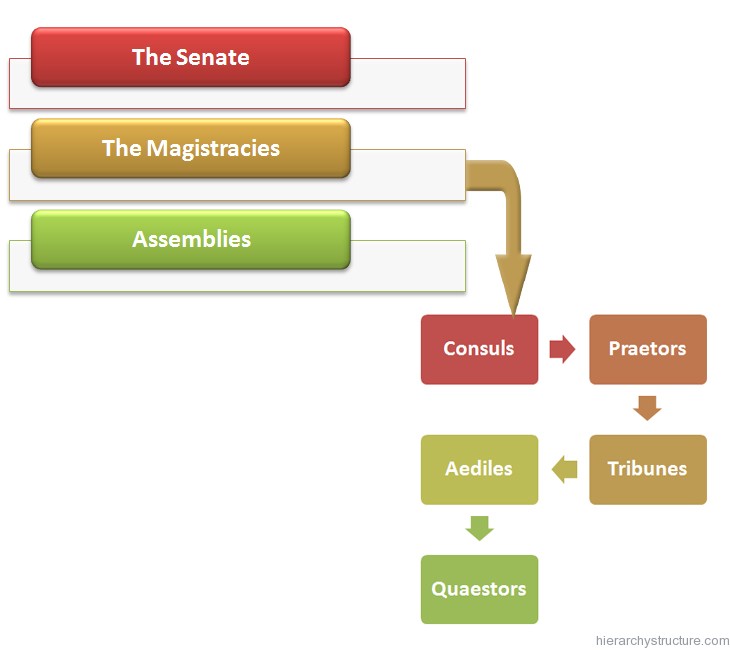The Roman Political system is basically divided into three main elements such as the Senate, the Magistrates and the Assemblies. The senate is politically important because it is the center point for political discussion. The Senate mainly manages the advisory powers. Secondly, the administrative and executive powers lie with the magistrates. In addition, they are also responsible for serving as judges and initiating legislation. Thirdly, in the assemblies; people pass bills, elect the magistrates and serve various judicial functions. What, we have discussed above, is a basic aspect of the Roman political structure. We will further discuss in details about the Roman political hierarchy.
The administration of roman political hierarchy is handled by Plebeian Assembly and the Senate. The Tribune of the Plebs represents Plebian and Equestrian interests in the Senate.
Here is a detailed hierarchy of the Roman political hierarchy:

The Senate
- The Senate is mainly an advisory institution; whose members can receive delegations, debate on reports and issue decrees.
- The Senate guides the legislation enacted by the Plebeian assembly.
- The Senate provides forum, to divide the authority among the magistrates in order to avoid conflicts among them.
The Magistracy
a) Consuls
- The meetings of the Senate are called and presided by the consuls, as it comes as their primary responsibility.
- Only the Consuls can call for a division of the Senate.
- The new Roman laws can only be introduced by Consuls.
b) Praetors
- The Praetor ensures that all the legal laws of Rome are obeyed in accordance with the terms and conditions.
- They act as judge in solving the internal and external disputes, involving Romans.
- They also serve as a Consul Suffectus, in case a Consul is unable to keep participating.
c) Tribunes
- This appointment is only open to Plebeians and Equestrians. Only they can vote in the Tribune election.
- The Tribunes are allowed to sit in all the Senate meetings as the representative of people.
- They are empowered with VETO, which allows them to reject any Senate legislation literally.
- They automatically become a member of the Senate after completing a six month term.
d) Aediles
- This is a very important post of the political hierarchy. Rome relies on them for recognition and public relations.
- They must sponsor and supervise over two events in Rome among battle, games, feast, a sacred hunt, quest or races.
- The events presented by the Aediles must be pre-approved by the Consuls and the Tribunes.
e) Quaestors
- The Quaestors act as Treasurer for the country and are accountable to the Senate for the funds collected.
- They also serve as a procurator and oversee any purchases made by Rome collectively.
Assemblies
- This is the last organizational structure as per the Roman political hierarchy.
- Several laws were enacted through the joint action of a magistrate and an assembly.
- Assembles are chosen by the magistrate or determined by tradition.
To Know more about New York City Political Hierarchy Click Here
